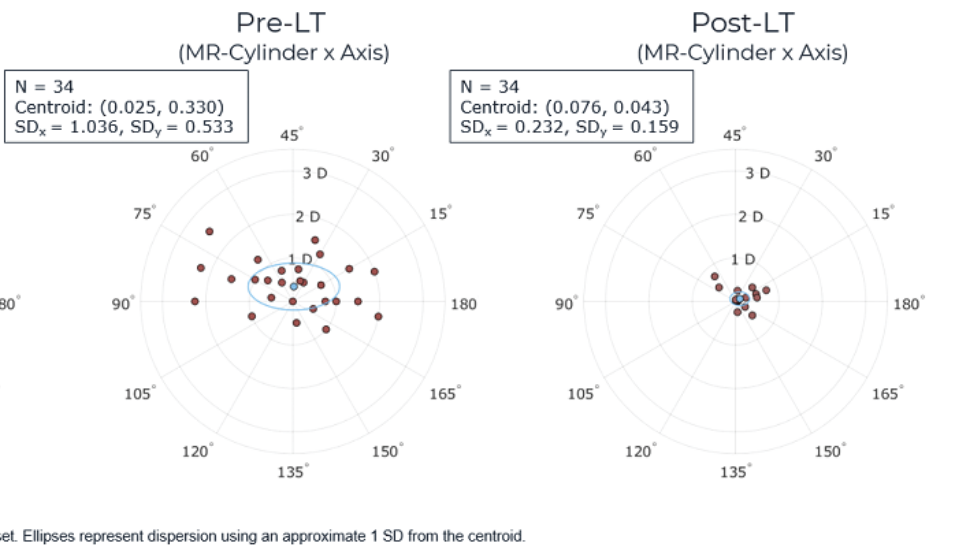The Light Adjustable Lens (LAL) is a groundbreaking innovation in refractive lens exchange, combining advanced technology with post-operative customization. It offers unmatched precision and patient satisfaction, addressing key limitations of traditional intraocular lenses (IOLs). A recent study by Ichikawa et al. (2024) highlights the exceptional outcomes of LAL in Japanese patients, demonstrating its transformative potential in clinical practice.
Unmatched Precision and Visual Outcomes
Achieving precise refractive outcomes is a critical challenge in lens exchange procedures. The LAL addresses this by allowing post-operative adjustments, enabling surgeons to fine-tune refractive results after implantation.
According to Ichikawa et al. (2024), 97% of eyes achieved a refractive accuracy within ±0.50 diopters of the target.
Among patients targeting emmetropia, 100% attained 20/20 or better uncorrected distance visual acuity (UDVA), a result typically associated with LASIK.
This precision ensures consistent and predictable outcomes, reducing the need for secondary interventions.
Customizable Vision for Individual Lifestyles
The LAL provides a unique opportunity for patients to customize their refractive outcomes based on real-world visual experiences. As reported in the study, patient satisfaction was remarkably high, with an average score of 8.8 out of 10. This ability to tailor vision post-operatively is particularly valuable for patients seeking spectacle independence and precise correction for their lifestyle needs.
Exceptional Visual Quality Across All Distances
The LAL goes beyond refractive accuracy, delivering superior visual quality and functionality:
Contrast sensitivity, a critical aspect of visual performance, matched the levels of a healthy population aged 50-60 years.
The lens provided an extended depth of focus, ensuring functional vision from infinity to 45 cm, making it ideal for near and intermediate tasks, particularly for presbyopia patients.
Versatility in Complex Cases
Patients with prior corneal refractive surgery often pose unique challenges for refractive lens exchange. However, the LAL has proven its efficacy in these scenarios.
Ichikawa et al. (2024) noted that all cases in this subgroup achieved refractive outcomes within 0.25 diopters of the target, underscoring the lens's reliability even in complex clinical situations.
Safety and Long-Term Reliability
Patient safety is paramount, and the LAL has demonstrated a robust safety profile:
No adverse events were reported in the study.
Importantly, no patients experienced a loss of corrected distance visual acuity, reinforcing the lens's reliability.
These findings provide reassurance for both surgeons and patients, particularly in elective lens exchange procedures.
Implications for Clinical Practice
The LAL represents a paradigm shift in refractive lens exchange by providing surgeons with post-operative flexibility to refine visual outcomes. This innovation not only elevates clinical precision but also enhances the patient experience, meeting the growing demand for personalized vision correction and spectacle independence.
For ophthalmology practices, incorporating the LAL into clinical offerings signifies a commitment to delivering cutting-edge care and superior outcomes.
Conclusion
The Light Adjustable Lens, as demonstrated in the study by Ichikawa et al. (2024), is redefining the possibilities in refractive lens exchange. Its ability to combine precision, customization, and safety makes it a standout option for both surgeons and patients. For practices looking to stay at the forefront of ophthalmology, the LAL is an essential tool for achieving exceptional results and advancing patient care.
Citation:
Ichikawa, K., et al. (2024). Visual outcomes after cataract surgery with the light adjustable lens in Japanese patients with and without prior refractive surgery.

